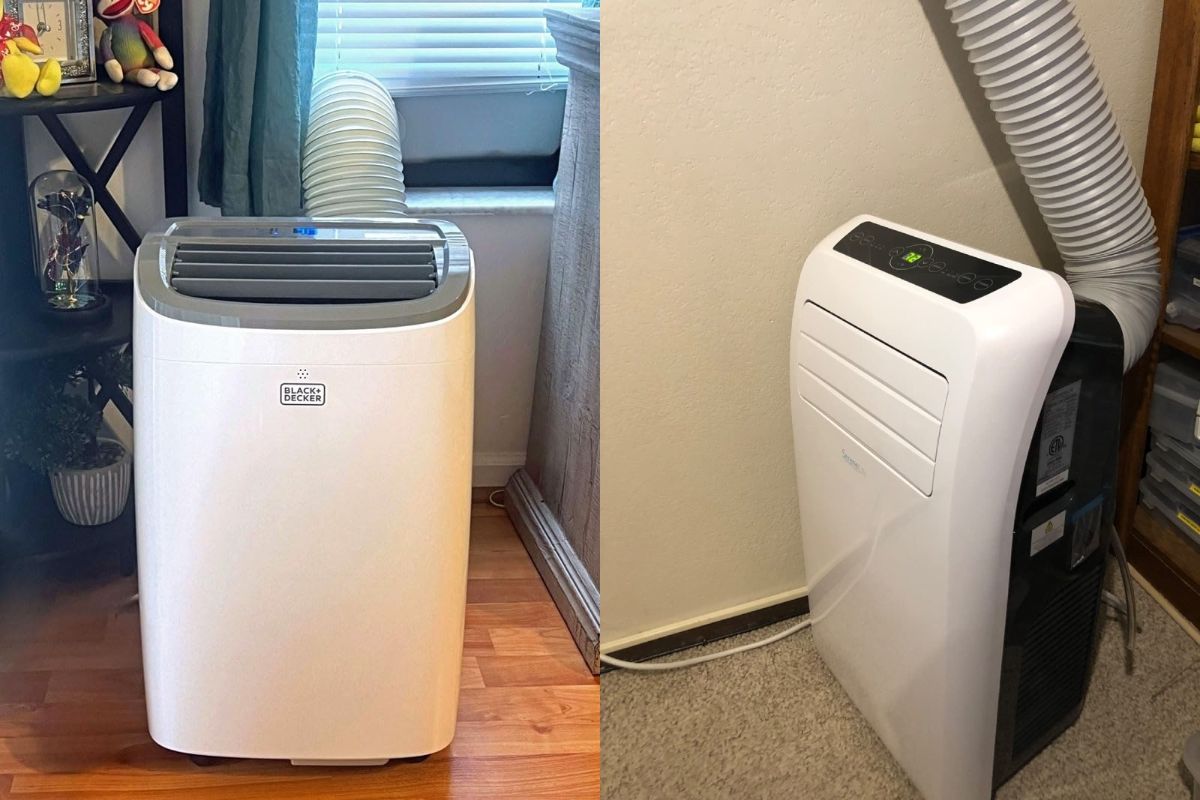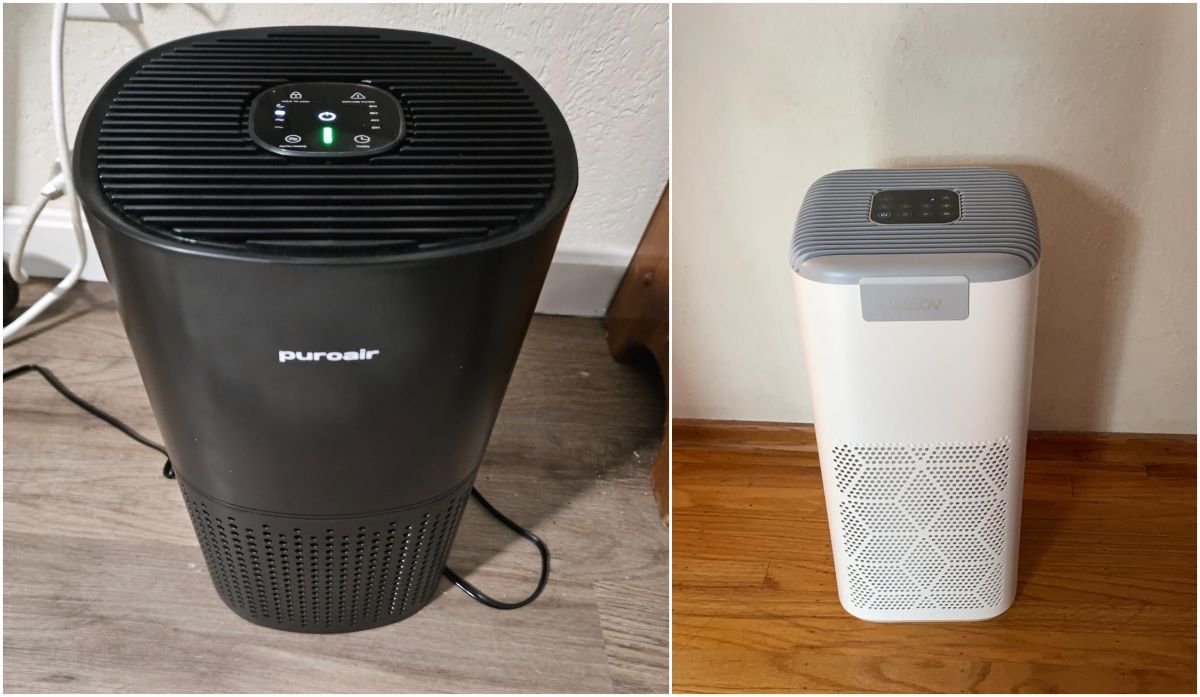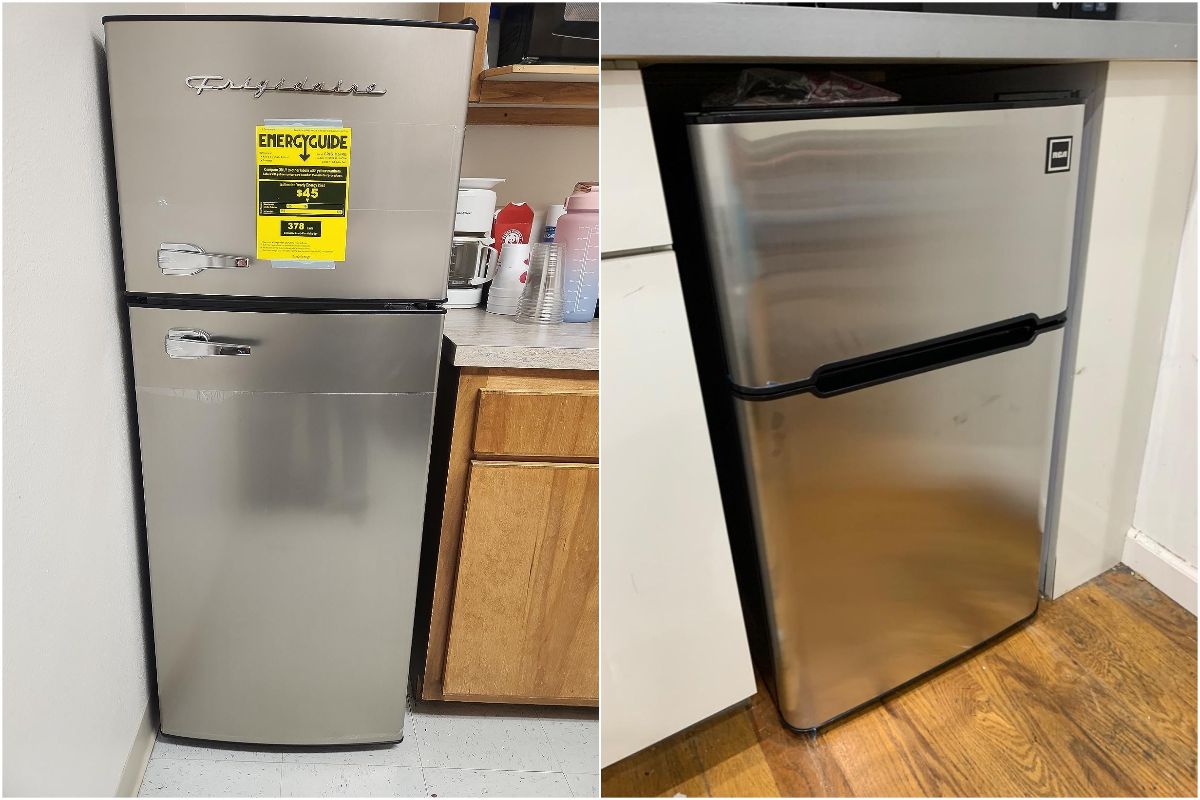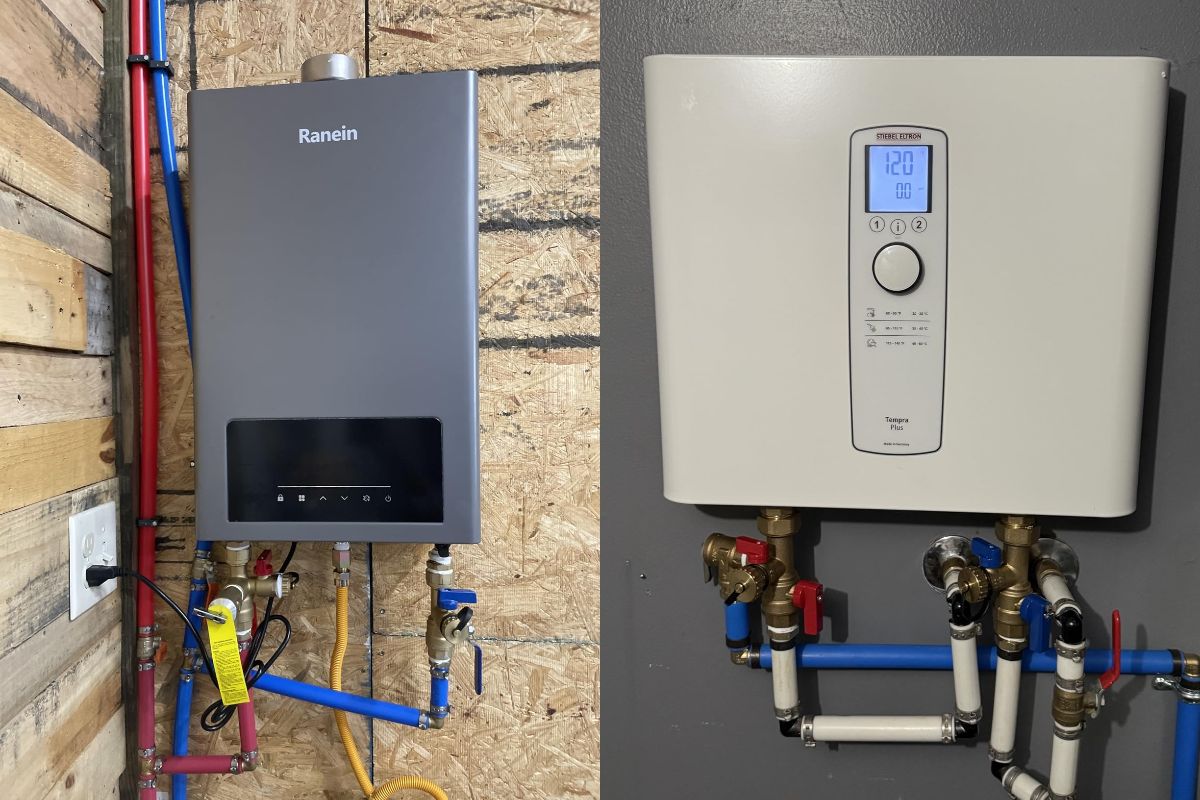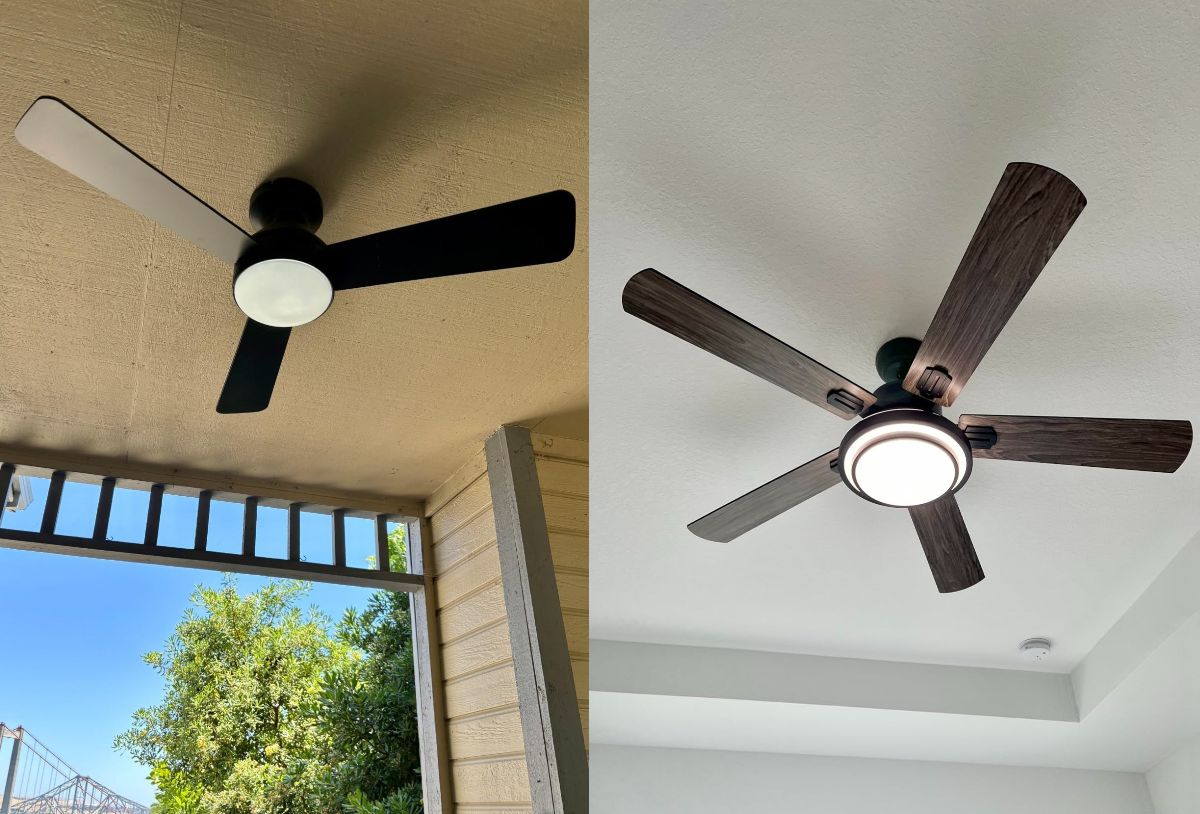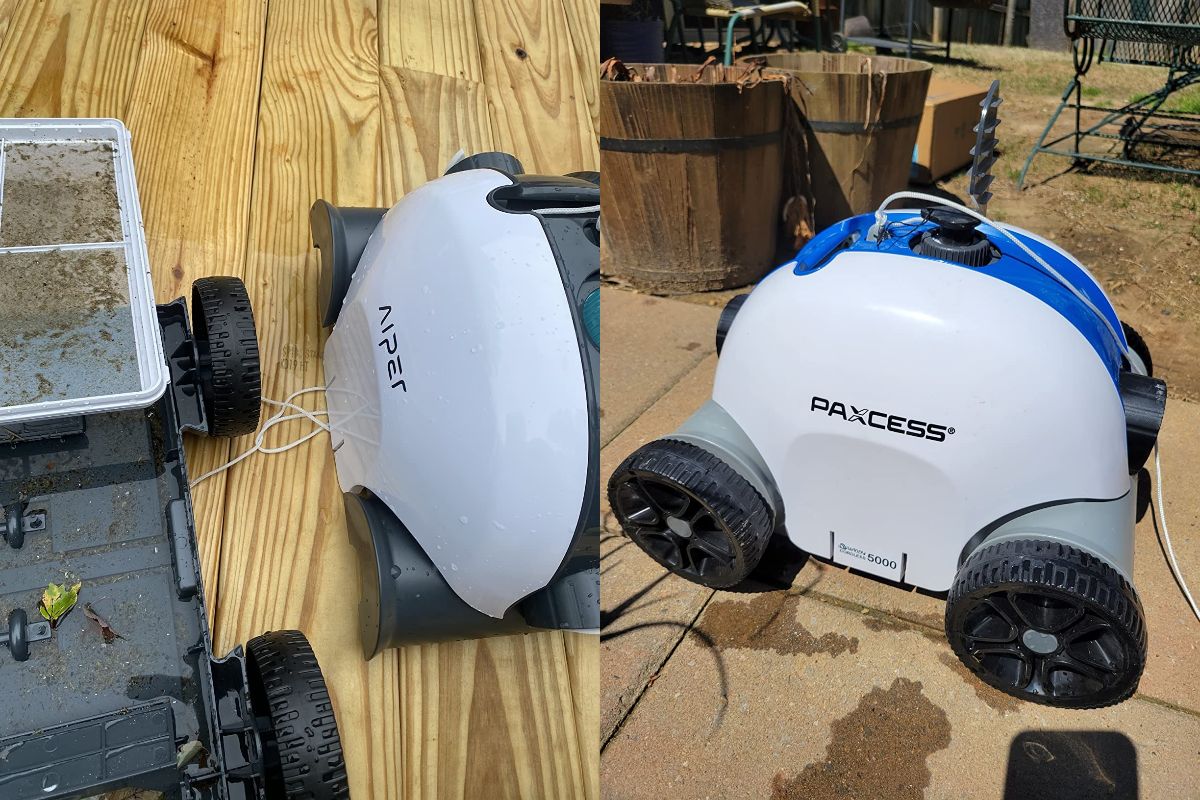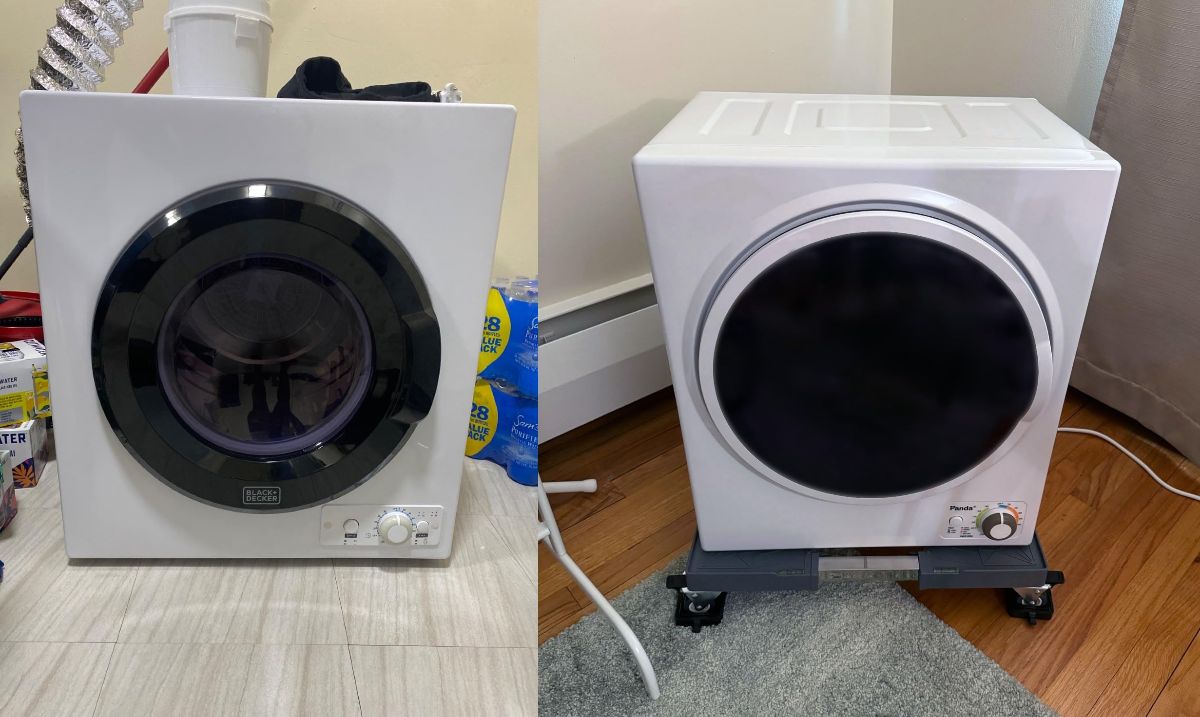Finding the right portable air conditioner can be tricky with so many choices out there. To help you decide, we’ve rounded up the best models based on real customer reviews. These picks are praised for their cooling performance, ease of use, and overall value in everyday use.
1. BLACK+DECKER Smart Portable Air Conditioner
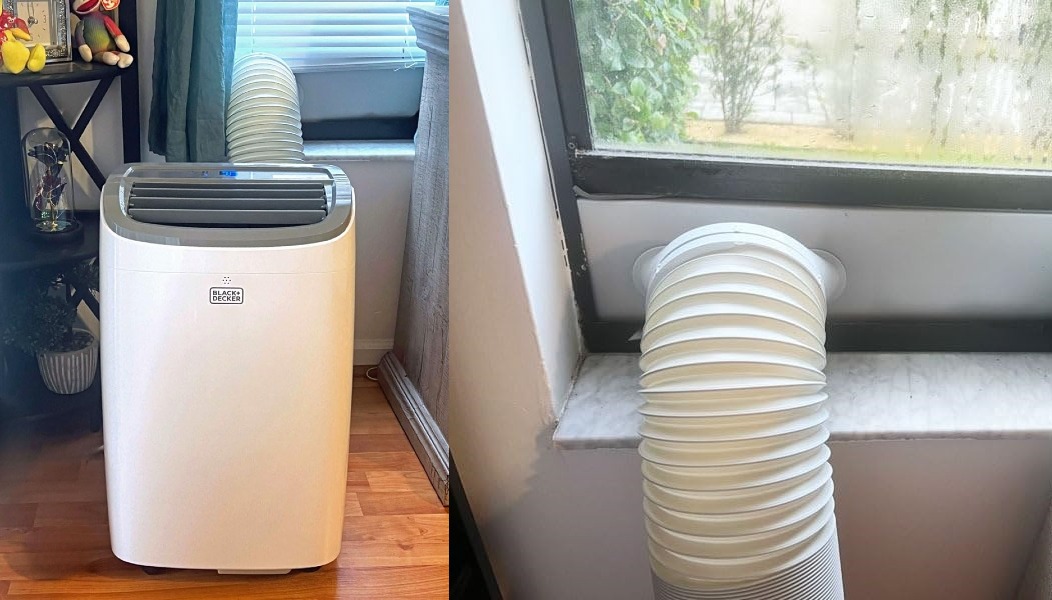
Helpful Review: I bought the 12,000 BTU model last year when we were anticipating a summer heat wave, but the heat wave never happened. So I stored it unopened for a year. The heat arrived this summer, so I took it out, put the window venting panel together, and turned it on. I’m using it in my living room, a large open space (about 750 SF) (i.e., it’s larger than this unit is rated for).
As the temperature climbed outdoors, it started dropping in my living room. It reached 88 degrees outside but was 68 degrees in my living room (so, about 20 degrees lower). Considering the size of the room, I was pleased with how well it worked. The fan has a pleasant white noise sound on this model.
Re: problems and issues: One thing I found a little irksome was that the vents the cool air pours out of, aim upward and can’t be angled downward (or horizontally) to blow cool air on me when I’m on the couch working. I do most of my work there, so this was a downer. I solved it by propping a piece of lightweight plastic on top of it to angle the air flow toward me. Not ideal but it works. (But they really should fix the vent issue.)
The big ‘dryer hose’ that vents the heat through a widow heats up a bit; this isn’t a design flaw, it’s how portable AC units work. (They essentially take in air, separate it into hot and cold, then throw the cold air out of the front, and the hot air out of the back.)
The fact that the hose heats up reduces their efficiency, causing them to transfer some heat back into the room you’re using them in. To minimize this, keep the unit as close to a window as possible so that the hose will be as short as possible. It’s not a problem for me yet, but if it becomes one, I may get some kind of insulation to put around it. Other than that, there are no problems so far.
2. Whynter Portable Air Conditioner

Helpful Review: This portable AC unit is an absolute beast, and I’m extremely happy with it. The cooling performance is fantastic—it easily blows air that’s 30–35°F cooler than the ambient room temperature. I’ve seen it put out air as cold as 27°F when the room was at 61°F, and it has never frozen up on me. When it’s 90°F in the room, it can still push out air at around 60°F, sometimes even colder. I’ve checked all temps using a calibrated infrared thermometer. It handles my 375 sq. ft. upstairs room with vaulted ceilings like a champ, even with a computer setup pulling around 750 watts adding heat. I keep the exhaust tube well insulated so heat doesn’t radiate back in—that really helps with performance. If it wasn’t insulated, I doubt the unit could hold the room at 75°F when it’s 96°F outside. On really hot days, I start it early in the morning at 61°F and let it run all day. That way, it keeps up, and the temp never creeps above 75°F, even under a heavy load.
Compared to my old Soleus Air 14,000 BTU dual-hose unit, which was decent but not impressive, this Whynter blows it out of the water. I didn’t even bother replacing the Soleus when it broke, but working from home changed things. I’m so glad I made the switch—this unit is far better in every way. Noise levels are also good for a portable AC. It’s quieter than the Soleus Air and about as loud as a box fan on medium. Most of the noise comes from the fan, not the compressor. On lower settings, the compressor is more noticeable, but even then, it’s not bad. I also love that it blows air upward. A lot of people seem to dislike that, but for my vaulted ceilings, it’s perfect. It keeps the room more evenly cool, avoids stratification, and reduces the need for constant cycling. With my old AC that only blew horizontally, the room was cool down low but warm at head height. No such problem with this one. If you need cold air directly on you, just use an extra fan.
Aesthetically, I think it looks better than any other unit I’ve seen. It’s not just functional—it looks clean too. Now, for the downsides. I loved it so much I bought another one for the bedroom to avoid using central AC, which lowered my power bill significantly. But that’s where I ran into problems. Unlike my office where the unit runs almost constantly, in the bedroom it cycles on and off when the set temperature is reached. This cycling is jarring at night—the noise difference when the fan or compressor turns on is enough to wake you up. The fan even cycles just to sample the room temperature, even when cooling isn’t needed, which is extremely annoying when you’re trying to sleep.
At night, the narrow 1°F temperature swing becomes a big issue. Say it’s 75°F outside, and I’ve set the AC to 70°F. It cools to 70, shuts off, then kicks back on at 71. That tight band makes it cycle way too often. The thermostat is dead-on accurate, which is great, but the unit really needs a 2–3°F adjustable working band. Ideally, I’d love to be able to set it so that it cools to 65 and only kicks back on when it hits 75—that would be perfect for nighttime comfort. This would also reduce compressor wear and tear. I’d rather it run less often with wider swings at night and more frequently during the day with tighter control. Right now, the narrow 1°F band is too much for night, but I agree that a wide 5°F swing would also be bad. The real solution is to let users adjust the band.
To manage this, I’ve started using two strategies. One is setting the AC to 61°F at night so it runs longer without cycling. Once it hits 61 and starts cycling every five minutes, I shut it off and sleep until the room heats up again. When I wake up from the heat, usually at 74°F, I turn it back on. That cycle usually wakes me 2–4 times per night, which isn’t too bad since I tend to wake up once or twice anyway. Option two is to start the unit two hours before bedtime so it cools the room to around 61–63°F. Then I shut it off and fall asleep in comfort. The downside is that the room warms up faster during the night, so I usually have to turn it on again once or twice. Both options work, but they’re not ideal. If the unit had an adjustable working band, I’d set it to 5°F at night and reduce the number of cycles dramatically.
The remote is another weak point. You have to be really close and point it directly at the unit—it doesn’t work at wide angles. Plus, it’s one-way only, so if you change settings on the unit and then use the remote, it overrides everything with its last saved settings. My old Soleus had a two-way remote that synced with the unit, which avoided this issue entirely. In 2021, I really expected some sort of smart control. WiFi functionality would be a game changer. Imagine controlling everything from your phone or Apple Watch, even programming scheduled behaviors. That would completely fix the nighttime cycling problem by letting me program cooler periods followed by off intervals without needing to wake up.
Despite these cons, I still absolutely love this unit. For me, all that really matters is how well it cools, and this AC delivers better than any other portable unit I’ve used or seen. If you’re not using it in a bedroom, I think most people would be thrilled with the performance. But if nighttime cycling noise is a dealbreaker, you might want to look elsewhere—unless you’re okay with the kind of workarounds I’ve had to come up with.
3. SereneLife 3-in-1 Portable Air Conditioner
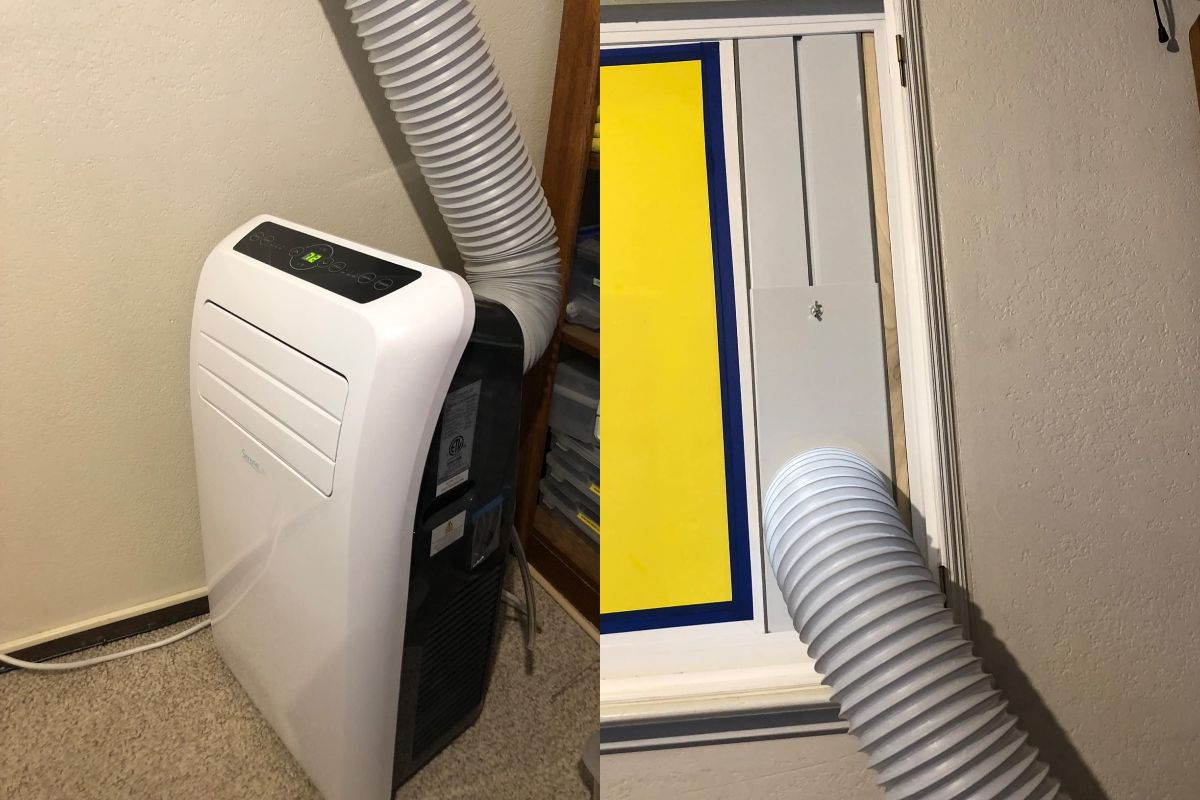
Helpful Review: So, I originally ordered two of these units. When they arrived, one worked great, but the other one was leaking all its coolant. The box was torn up, and the outer plastic casing of the unit was crushed or punctured. The replacement came and was actually in worse condition, also leaking coolant. Finally, the replacement for that replacement arrived in perfect condition with no leaks, no scratches, and no issues at all. The pictures I shared are from the first damaged unit that showed up leaking coolant.
Now that I have both working units, the timing worked out perfectly. It’s early spring in Texas, which means some days are in the 80s and some in the 30s. These things handle both heating and cooling really well. What really took me by surprise was how quiet they are. Some other reviews mentioned noise, but compared to what, I’m not sure. Mine are very quiet. I wasn’t expecting that at all since these are essentially electric furnaces and air conditioners packed into plastic containers. My guess is that the noise complaints are from people who didn’t let the unit sit upright long enough after delivery. Anything with a compressor that moves coolant needs time to settle before being powered on. If not, it might still function but will be louder and may never cool or heat properly. This is the same with refrigerators too.
The heating performance is impressive. It takes a moment to get going. First, the compressor kicks in, then the fan starts on low. After running a bit, the heat output increases. On a night when it dropped to 34 degrees, I had to turn the unit down from 72 to 68 because it warmed the room up fast. The heat coming out is not as intense as what you get from a gas furnace or space heater, but it moves way more air. That makes all the difference. It heats rooms efficiently without the risk of being too hot to touch or setting anything on fire. And it uses under 1000 watts when heating, which is much better than most 1500-watt space heaters that don’t perform nearly as well.
It also has a feature to handle the water it collects. If you don’t use the included drain hose and leave the drain plug in, the unit will evaporate the water on its own. If you do use the hose, the drain has pressure behind it. The water comes out with enough force to blow bubbles when submerged. It doesn’t splash or cause a mess, and the pressure helps keep the drain from clogging like what happens with many other units.
I’ve been working from home for years, way before COVID, and having a quiet work environment is a must. Noise can be distracting and even get you in trouble during meetings. This unit sits less than six feet from me and doesn’t get picked up on my mic at all. Again, it really should not be loud if you follow the instructions and let it sit upright for a few hours before turning it on. I let mine sit for four hours instead of the recommended two. I think that made all the difference because once a compressor gets damaged by running too soon, it never runs quietly again. The remote is solid too. You don’t need to point it straight at the unit for it to work, which is convenient.
One thing to know is that, like all portable air conditioners, this one creates a slight vacuum. It pulls air in from cracks in walls, floors, windows, or vents. This happens because it pulls room air to cool the rear radiator, which then vents outside. Only some of that air gets blown back into the room. The rest gets pushed outside through the exhaust hose. I’m used to this setup, so I usually build a small box around the back of the unit and add another vent pipe going outside, about half the size of the main exhaust. That solves the issue and improves performance. If I don’t do that, I just crack a window near the unit. It’s something I’m already used to doing from using wood stoves, so it’s not a big deal for me.
4. Amazon Basics Portable Air Conditioner
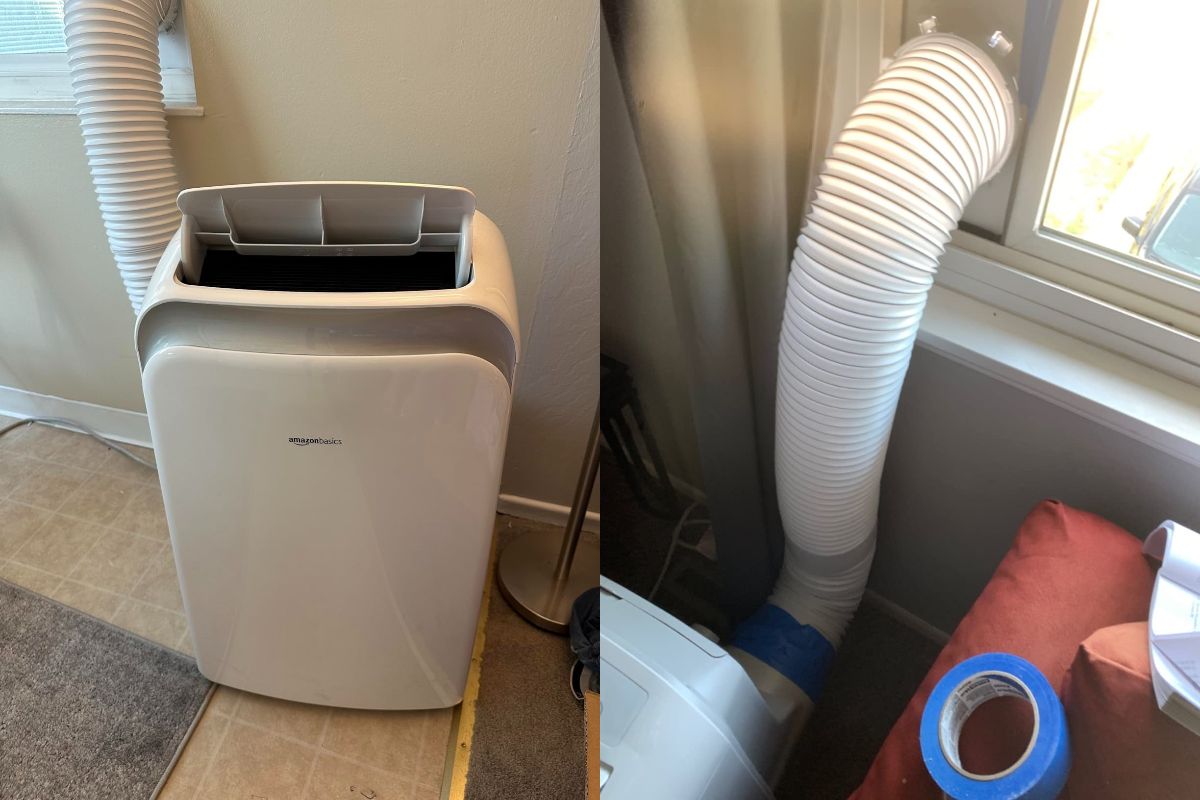
Helpful Review: So far so good. The AC functions as well as you’d hope and seems to cool a nice portion of our home pretty well. No complaints there as of yet. My one complaint is with the optional drainage option. The tube provided is far under sized and is a huge oversight with this product. The instructions suggest not to exceed 70″ upward drainage but only comes with a 24″ tube. The cheapest part of the whole assembly is where they decided to cut costs? Makes me wonder where else these types of glaring oversights and cost cutting may manifest. Here’s hoping this is just a bonehead oversight.
Also I noticed a review claiming that their system has had a, “P1 error”, since they got it. P1 is the code that flashes when it’s time to empty the condensate tray located on the bottom of the unit. I would advise anyone who purchases this product to read the manual and learn their machine entirely as with any hvac assembly a fair bit of maintenance is required. This product is no exception and proper maintenance will prolong the effective use of your heating and cooling products. If you didn’t run the tube, you need to empty the tray periodically. Cleaning the filters is also necessary.
5. Spürbar Portable Air Conditioner
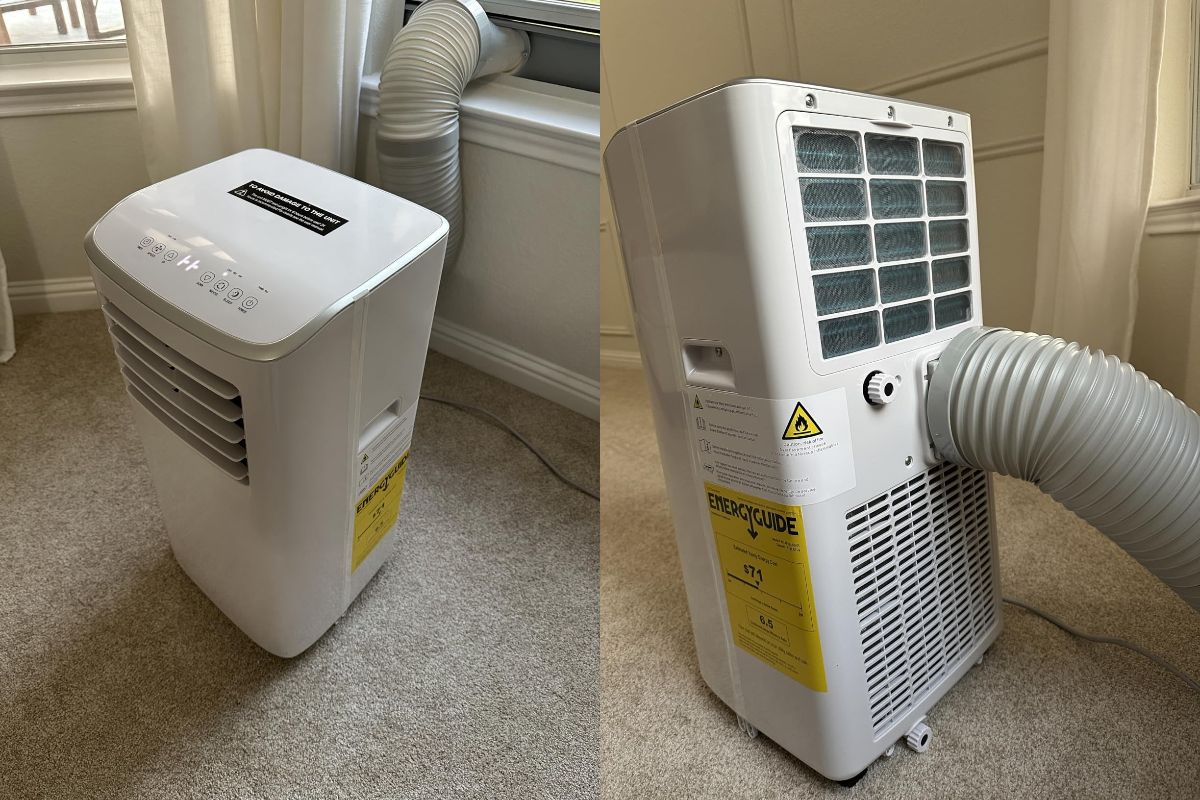
Helpful Review: The packaging for this air conditioner was excellent, which is especially important for a large and heavy item like this. I’d estimate the unit weighs around 50 pounds. The box includes clear instructions printed on the outside, guiding you on how to remove the unit and components from the packaging. Inside, everything was securely packed. Two sets of instructions were included: a quick setup guide and a more detailed instruction booklet. The steps showing how to install the window kit were easy to follow. However, you’ll likely need to cut one of the plastic pieces to fit your window size. These window inserts fit reasonably well but not tightly. There were small gaps where outside air could get in, so you might want to seal them with tape. In my case, I wasn’t worried about bugs because I had a screen on the outside.
The included 6-inch diameter exhaust hose extends easily and connects between the back of the AC unit and the window panel. It’s about 6 feet long and can bend smoothly to about a 45-degree angle. The ends of the hose twist securely onto the plastic connectors provided. The power plug is a standard 3-prong type with a built-in test and reset device. My unit arrived in test mode, so I had to press the reset button near the plug before the unit would power on. There’s also a small drainage hose, around 3/8 of an inch in diameter, which you can use to channel water into a bucket or a container like a gallon milk jug.
Once everything was connected, I pressed the power button on top of the unit, and it started right up. I selected the cooling mode using the mode button and set the temperature to 70 degrees with the down arrow. The unit offers two fan speeds: low and high. It also features a timer for automatic shut-off. On the low fan setting, the noise level was low enough to sleep through comfortably. Within about two minutes, cold air was flowing out of the front vents. Overall, this is a great air conditioner for a room up to 200 square feet. I would definitely recommend it.
Frequently Asked Questions:
What size portable air conditioner do I need for my room?
The size you need depends on the square footage of the space. For example, a 7,000–10,000 BTU unit is ideal for rooms up to 300 sq. ft., while 12,000–14,000 BTU models can handle 400–700 sq. ft. Always check the manufacturer’s recommended coverage.
Do all portable air conditioners need to be vented out a window?
Yes, most portable ACs require venting hot air outside, typically through a window using the included exhaust hose. Some dual-hose models or ventless evaporative coolers work differently, but for true air conditioners, venting is required.
What’s the difference between single-hose and dual-hose portable ACs?
Single-hose units pull air from the room and exhaust hot air outside, which can create slight negative pressure. Dual-hose models use one hose to pull in outside air and another to expel hot air, making them more efficient and better for larger spaces.
Can I use a portable AC in a room without windows?
Not without modification. You’ll need an alternative way to vent the hot air, such as through a sliding door, drop ceiling, or dryer vent. Without proper ventilation, the unit won’t cool effectively.
Do portable air conditioners also dehumidify the air?
Yes, all portable air conditioners remove moisture from the air as they cool. Many units also have a dedicated dehumidifier mode to reduce humidity without cooling.
How loud are portable air conditioners?
Noise levels vary by model but usually range between 50 to 60 decibels, similar to a quiet conversation or a box fan. Quieter models may offer sleep modes or lower fan speeds to reduce noise at night.
Do I need to drain water from my portable AC?
Some units are self-evaporating and rarely need draining. Others may need to be drained manually or via a hose, especially in humid conditions or when used in dehumidifier mode.
Are portable AC units energy efficient?
Look for models with an Energy Efficiency Ratio (EER) of 8.5 or higher. Some units also come with energy-saving features like timers, sleep mode, and programmable thermostats to reduce power consumption.
Can I control a portable AC with my smartphone?
Many newer models offer WiFi connectivity and are compatible with smartphone apps, Alexa, or Google Assistant for remote control and scheduling.
Is installation difficult?
Most portable ACs are easy to install. They come with a window vent kit and can usually be set up without tools in under 30 minutes. Make sure to measure your window size before purchasing.
